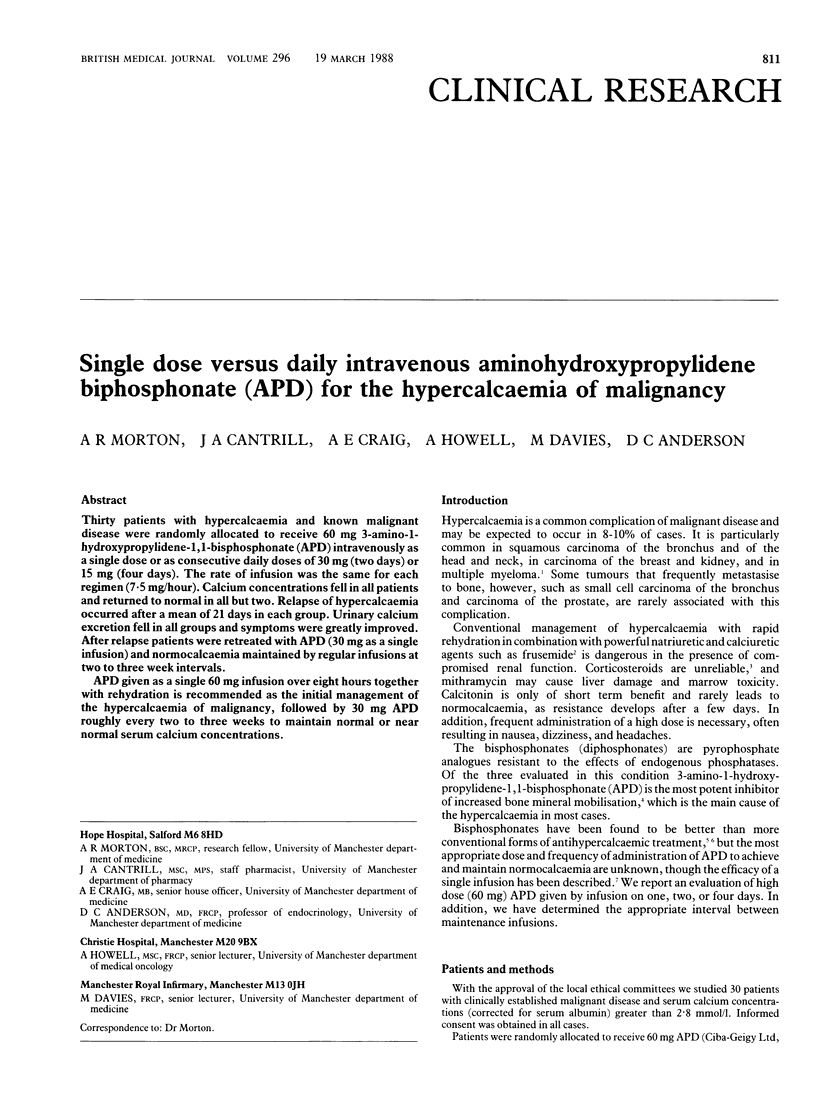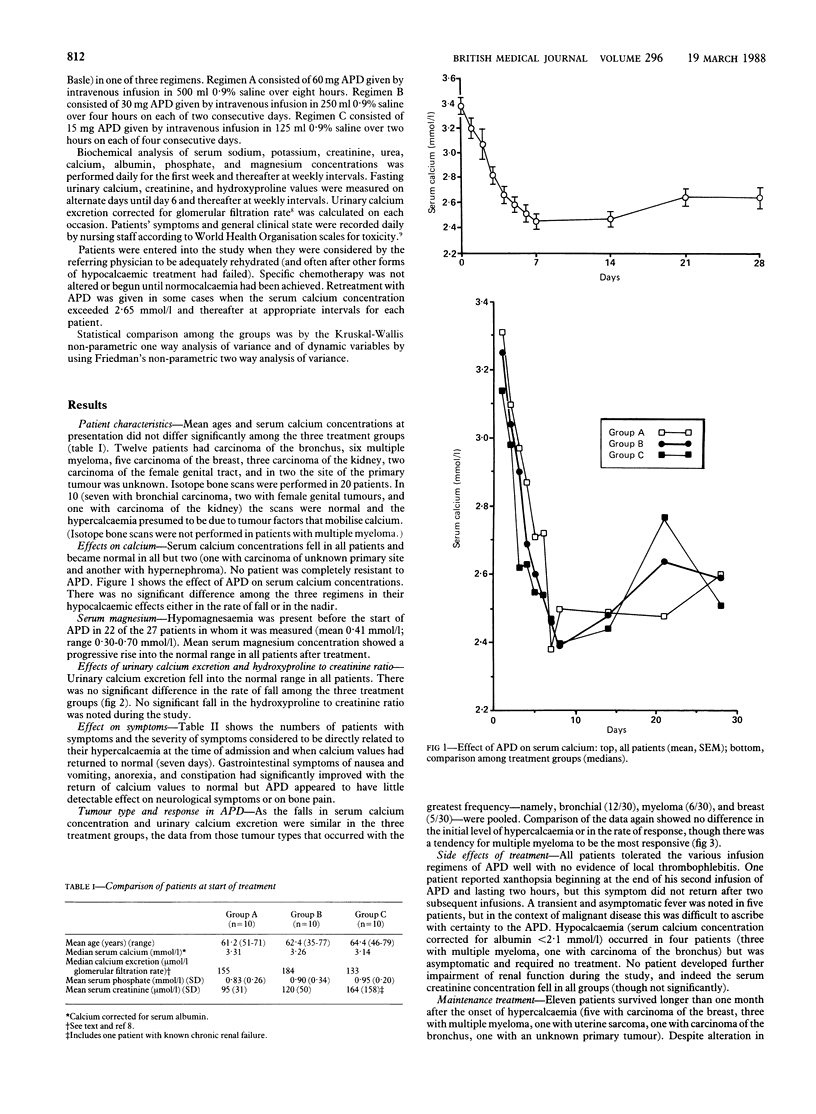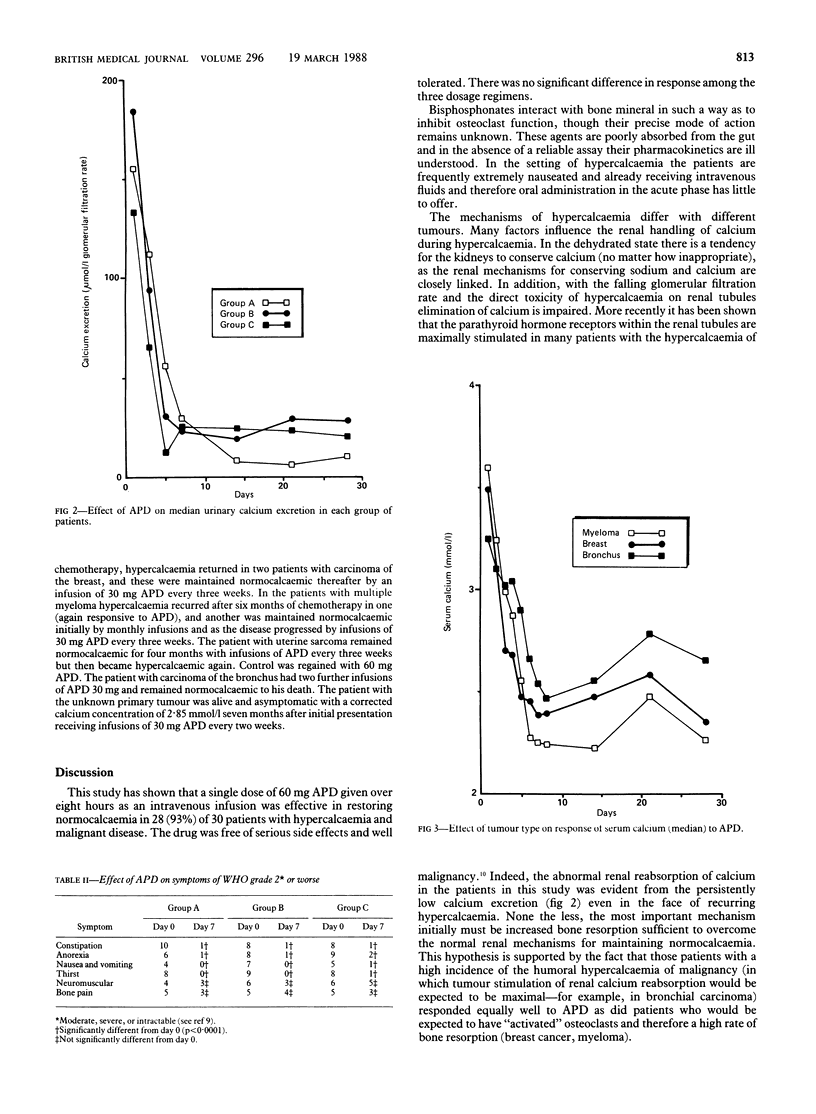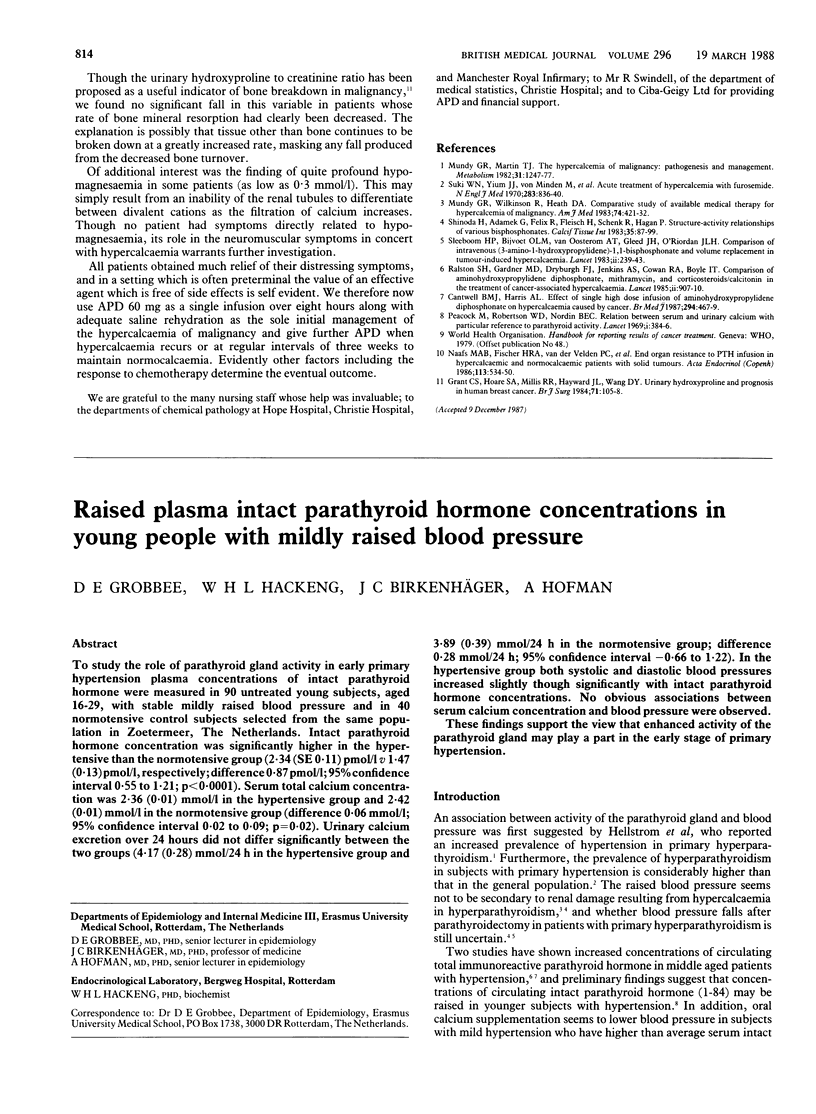Abstract
Thirty patients with hypercalcaemia and known malignant disease were randomly allocated to receive 60 mg 3-amino-1-hydroxypropylidene-1, 1-bisphosphonate (APD) intravenously as a single dose or as consecutive daily doses of 30 mg (two days) or 15 mg (four days). The rate of infusion was the same for each regimen (7.5 mg/hour). Calcium concentrations fell in all patients and returned to normal in all but two. Relapse of hypercalcaemia occurred after a mean of 21 days in each group. Urinary calcium excretion fell in all groups and symptoms were greatly improved. After relapse patients were retreated with APD (30 mg as a single infusion) and normocalcaemia maintained by regular infusions at two to three week intervals.
APD given as a single 60 mg infusion over eight hours together with rehydration is recommended as the initial management of the hypercalcaemia of malignancy, followed by 30 mg APD roughly every two to three weeks to maintain normal or near normal serum calcium concentrations.
Full text
PDF



Selected References
These references are in PubMed. This may not be the complete list of references from this article.
- Cantwell B. M., Harris A. L. Effect of single high dose infusions of aminohydroxypropylidene diphosphonate on hypercalcaemia caused by cancer. Br Med J (Clin Res Ed) 1987 Feb 21;294(6570):467–469. doi: 10.1136/bmj.294.6570.467. [DOI] [PMC free article] [PubMed] [Google Scholar]
- Grant C. S., Hoare S. A., Millis R. R., Hayward J. L., Wang D. Y. Urinary hydroxyproline and prognosis in human breast cancer. Br J Surg. 1984 Feb;71(2):105–108. doi: 10.1002/bjs.1800710208. [DOI] [PubMed] [Google Scholar]
- Mundy G. R., Martin T. J. The hypercalcemia of malignancy: pathogenesis and management. Metabolism. 1982 Dec;31(12):1247–1277. doi: 10.1016/0026-0495(82)90012-9. [DOI] [PubMed] [Google Scholar]
- Mundy G. R., Wilkinson R., Heath D. A. Comparative study of available medical therapy for hypercalcemia of malignancy. Am J Med. 1983 Mar;74(3):421–432. doi: 10.1016/0002-9343(83)90961-0. [DOI] [PubMed] [Google Scholar]
- Peacock M., Robertson W. G., Nordin B. E. Relation between serum and urinary calcium with particular reference to parathyroid activity. Lancet. 1969 Feb 22;1(7591):384–386. doi: 10.1016/s0140-6736(69)91353-1. [DOI] [PubMed] [Google Scholar]
- Ralston S. H., Gardner M. D., Dryburgh F. J., Jenkins A. S., Cowan R. A., Boyle I. T. Comparison of aminohydroxypropylidene diphosphonate, mithramycin, and corticosteroids/calcitonin in treatment of cancer-associated hypercalcaemia. Lancet. 1985 Oct 26;2(8461):907–910. doi: 10.1016/s0140-6736(85)90848-7. [DOI] [PubMed] [Google Scholar]
- Shinoda H., Adamek G., Felix R., Fleisch H., Schenk R., Hagan P. Structure-activity relationships of various bisphosphonates. Calcif Tissue Int. 1983;35(1):87–99. doi: 10.1007/BF02405012. [DOI] [PubMed] [Google Scholar]
- Sleeboom H. P., Bijvoet O. L., van Oosterom A. T., Gleed J. H., O'Riordan J. L. Comparison of intravenous (3-amino-1-hydroxypropylidene)-1, 1-bisphosphonate and volume repletion in tumour-induced hypercalcaemia. Lancet. 1983 Jul 30;2(8344):239–243. doi: 10.1016/s0140-6736(83)90231-3. [DOI] [PubMed] [Google Scholar]
- Suki W. N., Yium J. J., Von Minden M., Saller-Hebert C., Eknoyan G., Martinez-Maldonado M. Acute treatment of hypercalcemia with furosemide. N Engl J Med. 1970 Oct 15;283(16):836–840. doi: 10.1056/NEJM197010152831603. [DOI] [PubMed] [Google Scholar]


